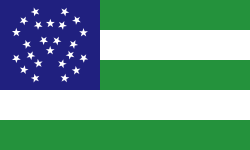Demographics / Zone Assessment Unit
The Demographics Unit (later known as the Zone Assessment Unit) was a secret police intelligence division formed after the September 11 attacks to surveil Muslim-Americans. [13] [14] [15] Police Spokespersons did not publicly acknowledge the unit until after the Associated Press revealed the organization through a Pulitzer Prize award-winning series of articles. [13]
The unit was founded in 2003 through a collaboration with the Central Intelligence Agency, which seconded veteran officer Lawrence Sanchez to the NYPD in 2002 to provide CIA-derived information to the NYPD and to guide the unit's foundation. [16]
The unit's techniques included eavesdropping on conversations held in public locations, [13] gaining access to internet usage by Muslim groups on college campuses by claiming to be investigating narcotics or gang activity, [17] and labeling entire mosques as terror groups in order to record sermons and spy on religious officials without specific evidence of criminal wrongdoing. [18]
Twenty-eight "ancestries of interest were monitored by the unit, ranging from Arab ethnicities like Palestinian and Syrian to heavily Muslim populations from former Soviet states such as Chechnya and Uzbekistan to Black American Muslims". [19] [20] [21] It was noted by the ACLU that the NYPD "expressly excluded from its surveillance and mapping activities non-Muslims such as Coptic Christian Egyptians or Iranian Jews". [22]
In 2013, the Muslim American Civil Liberties Coalition (MACLC), along with Creating Law Enforcement Accountability & Responsibility (CLEAR) and Asian American Legal Defense and Education Fund (AALDEF) published a report critical of NYPD surveillance of their communities, and the Demographics Unit in particular. [19] On April 15, 2014, the New York Times reported that the NYPD officially dismantled the Zone Assessment Unit. [20] However, there is concern that the data gathered through the program is still being used. [21]
in August 2012, the Chief of the NYPD Intelligence Division, Lt. Paul Galati admitted during sworn testimony that in the six years of his tenure, the unit tasked with monitoring Muslim-American life that had not yielded a single criminal lead. [19]
According to the NYPD, there were two specific instances where information from the Zone Assessment Unit was used. In the wake of the 2013 Boston bombing, NYPD deployed to areas inhabited by individuals from the Caucasus region, which includes Chechens, both to ensure people in those neighborhoods were not victimized by retaliation and to ensure that the two perpetrators would not able to blend into the area. In another instance, the NYPD responded in the Hazara community after a Hazara leader was killed by a Pakistan-based organization in Quetta, Pakistan. [23]
In 2018, the NYPD paid out a settlement to groups and persons that were surveilled and agreed to update their training and manuals and that it would not engage in surveillance predicated upon religion. [24]

